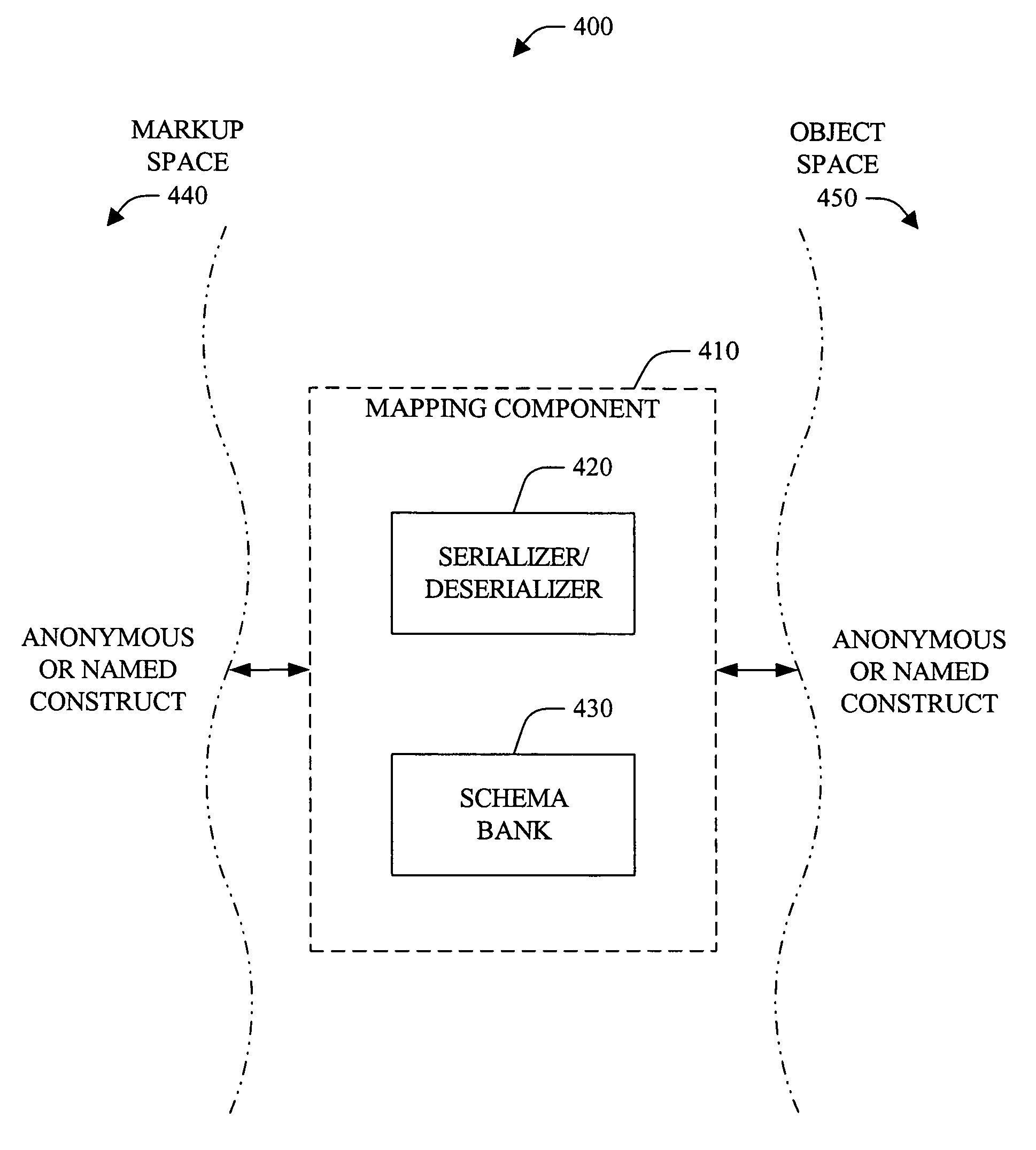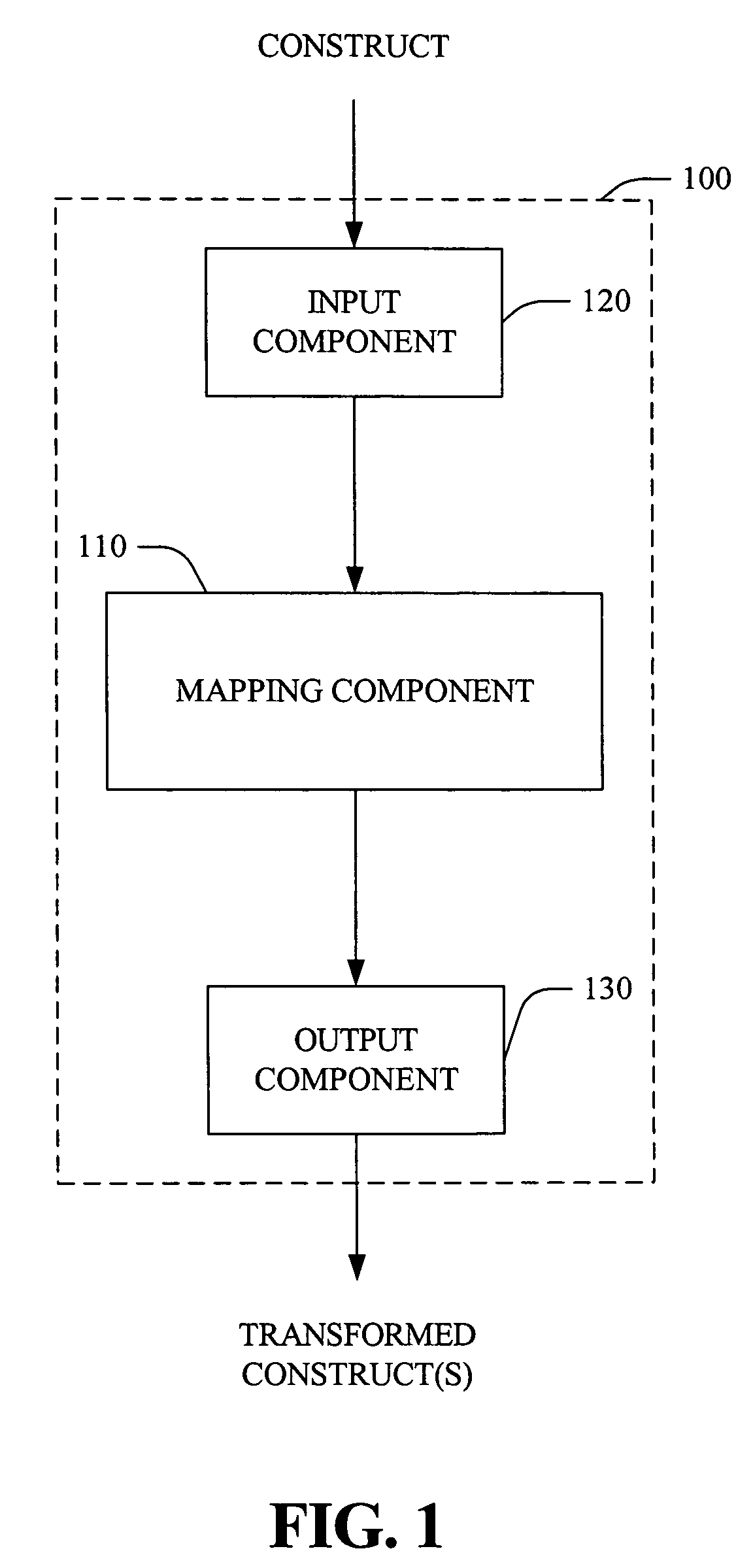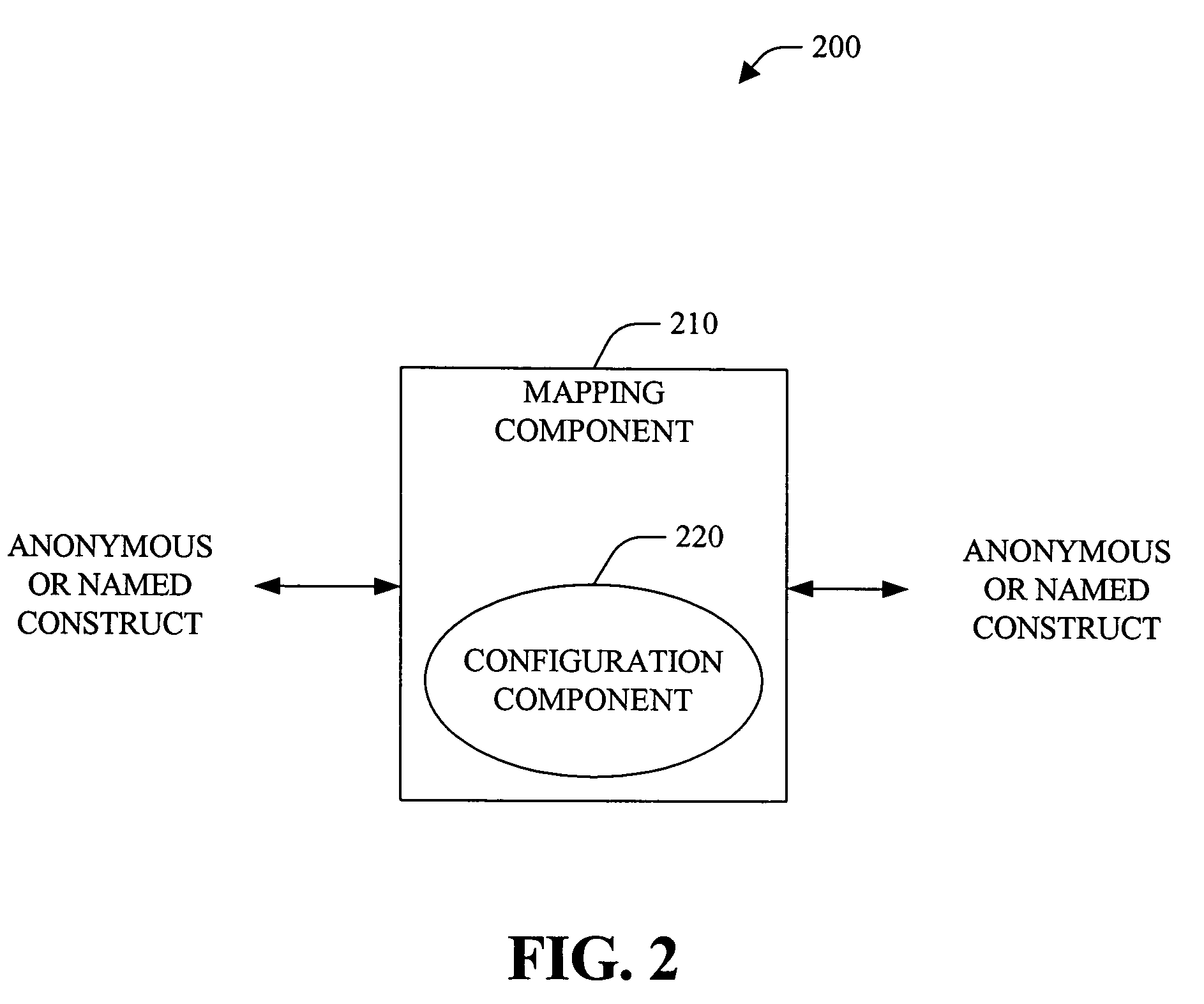Systems and methods that transform constructs from domain to domain
a technology of domain and construct, applied in the field of data processing, can solve the problems of large impedance mismatch between the structure used to represent xml artifacts and objects, completely different content models, and inability to handle mapping between such different structures well with conventional data-binding tools, so as to facilitate construct transformations
- Summary
- Abstract
- Description
- Claims
- Application Information
AI Technical Summary
Benefits of technology
Problems solved by technology
Method used
Image
Examples
Embodiment Construction
[0026]The present invention provides systems and methods that transform constructs between domains. In particular, a mapping component is provided that can obtain one or more suppress labels, introduce labels and / or mediating schema, and utilize such labels and / or schema to transform a construct from one domain to another domain. In general, introduce field labels typically are utilized to provide names for anonymous constructs and / or modify existing names, suppress field labels typically are utilized to suppress names such as introduced names or names a user desires to be absent, and mediating schema provide default and / or user defined customized mapping to generate an intermediate schema prior to transforming a construct. The foregoing can provide for improvements over conventional systems by overcoming structural mismatches between named and anonymous constructs and rendering isomorphic transformations.
[0027]The present invention is now described with reference to the drawings, w...
PUM
 Login to View More
Login to View More Abstract
Description
Claims
Application Information
 Login to View More
Login to View More - R&D
- Intellectual Property
- Life Sciences
- Materials
- Tech Scout
- Unparalleled Data Quality
- Higher Quality Content
- 60% Fewer Hallucinations
Browse by: Latest US Patents, China's latest patents, Technical Efficacy Thesaurus, Application Domain, Technology Topic, Popular Technical Reports.
© 2025 PatSnap. All rights reserved.Legal|Privacy policy|Modern Slavery Act Transparency Statement|Sitemap|About US| Contact US: help@patsnap.com



